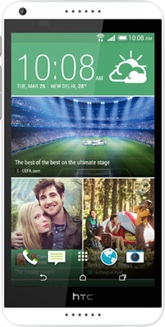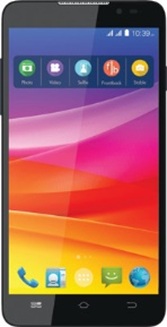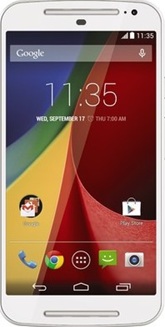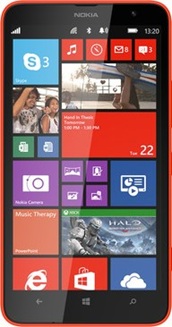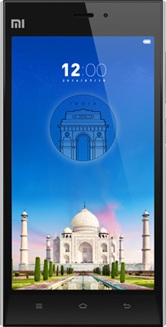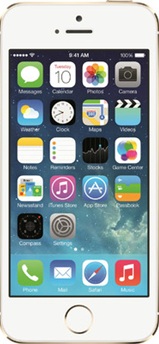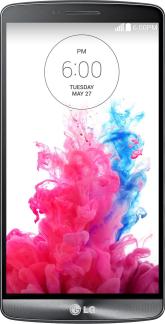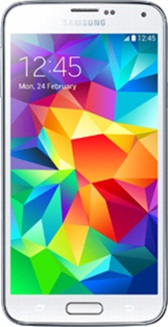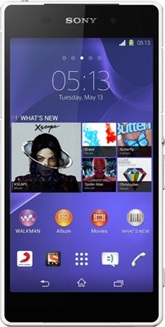Archive
Why Internet of Things (IoT) has immense potential in India?
The Internet of Things is generating enormous interest in the telecom world nowadays. IoT is expected to digitize our lives while making us more efficient and dependent on technology. For the telecom operators in the saturated developed markets, it could also be the next big source of revenue. Let me try to define this technology first. Internet of Things is a seamless network of uniquely identifiable everyday devices and objects that are connected to each other and the Internet with the purpose of making the daily life smarter and efficient through exchange of data between these connected machines without requiring any human intervention. Some have even called it the Internet of Everything.
Without violating an individual’s privacy, I believe IoT has tremendous potential in a fast-developing country like India. Seamless Internet connectivity through either Wi-Fi or high-speed cellular network is a prerequisite for this technology and India is getting there, albeit slowly. Mobile revolution has taken a solid foothold in the country. Smartphones are becoming increasingly common and possibilities of what can be achieved through a few finger touches on a mobile app are mind-boggling. The government’s latest push towards ideas like Digital India and Smart Cities is targeted primarily towards making people’s lives hassle-free and efficient. IoT fits very well in such a scenario and could be a growth driver for the country. In a vision document released by the government last October, an objective has been set to create a $15 billion IoT industry in India by 2020. Investments have started flowing in already. Cisco has committed $40 million to the Indian IoT space. Intel Capital, Qualcomm Ventures and many other VC firms are also investing millions of dollars in this industry. With such major push, here are some applications of IoT that can be implemented in India –
- Home Security – Security of homes in the absence of occupants is a major issue in many parts of India. IoT has a solution here. A set of strategically placed cameras connected to the Internet can provide a live feed of activities in and around a home on the owner’s device. Such systems are already in use nationwide. The next step would be to monitor the house through a mobile app with a built-in capability to immediately contact the police or local security authorities. A sensor that monitors opening of doors and windows, controls lighting smartly and detects unusual sounds when no one is home can help in preventing burglaries and intrusions. Godrej Security Solutions’ Eagle-I Pro is a wireless home alarm system that uses a mobile app and features many such IoT home security aspects.
- Automated Homes – The concept of smart appliances and devices within a home that inter-network with each other is more about convenience than anything else. Imagine a refrigerator that detects the grocery levels and sends a list of things to be ordered to the owner. Not only that, with a few touches on the mobile device, the order can be placed at a nearby store which delivers the products within a day or so. Next, how about a temperature control system that can be commanded remotely to keep the house at a certain comfortable level before the kids get back in? A recent product which accomplishes an interesting set of tasks in an automated home is TagPlug. It is basically a smart switch and plug that senses if a room is occupied and runs the equipment in the room accordingly. It even helps in saving electricity by automatically switching off – lights, phone charging or the water motor once the task is completed. Sounds cool? We will get to the ‘is this really needed’ part later.
- Sanitation and Cleanliness – With the current government’s latest Clean India initiative, there is a new found emphasis on keeping the surroundings clean. Commonly cited application is of a neighborhood smart trash collector that alerts the municipal authorities when full. If the sanitation crew does not respond within a certain time period, the trash collector can also send a message to the higher personnel in the department. Wireless sensors that detect dirt piles and unclean areas can be deployed in dense areas of a city. Pay as you throw model charges people on basis of how much garbage they throw and want to get collected. Such trash metering will discourage people from generating waste and hence would be very useful in India. Mumbai and Ahmedabad have conducted pilot projects using Vehicle Tracking Systems that track the movement of garbage trucks and help in route planning along with efficient allocation of sanitation staff.
- Healthcare – Tracking and remotely monitoring a patient’s health (with the patient’s permission) is another popular application of the Internet of Things. The technology has been applied in two ways. First, hospitals and doctors can track vulnerable patients and elderly people for any sudden changes in vital parameters. IoT devices can even include panic buttons in order to minimize emergency medical situations. Robert Bosch in collaboration with the Indian Institute of Science has designed applications that achieve some of these objectives. Fitness app that measures exercise, weight, blood pressure and other vital statistics is also an emerging area of interest. The app sends data to either the healthcare provider over Internet or uploads it to a user’s database for storage. 2mpower and SenseGiz are two startups having products in this space.
- Traffic Control – Ever-growing traffic is a huge problem nationwide. IoT can help here too. Intelligent traffic management systems are the most obvious applications. A common scenario is the estimated time to reach a destination based on vehicle density ahead. Further step could be the delivery of live traffic feeds to a user’s phone or car that assist in making route decisions and avoiding congestion. Smart traffic signals can regulate the traffic flow at busy intersections. Improved parking is another focus area here. Wireless sensors that intelligently gather information on parking availability can directly connect to a driver’s phone. This makes it easier to find a vacant parking spot without driving around. Altiux Innovations is a company that has come up with a smart parking solution.
- Transportation Logistics – Fleet tracking and monitoring could improve the overall performance of goods transportation. Wireless tags inside trucks can provide the owners with a real-time capability to scrutinize the use of vehicles on road. Freight theft and driver behavior can be checked too. Tata Motors is empowering its trucks with such technology. Telematics4u is a company that works with state governments to prevent illegal trading of minerals. Their system puts smarts tags in trucks that keep a check on supply, truck routes and unlawful distribution of minerals before reaching the intended destination. All this can greatly reduce losses for the industries while controlling corruption.
- Agriculture – Internet of Things is not just a technology for urban areas. Farmers can also benefit from it by modifying their procedures based on collected data. This could include precise weather monitoring, updates on soil moisture levels, ability to customize climatic conditions for healthy production of fruits and vegetables and temperature monitoring in the grain storage areas. Health analysis of livestock and remote pest monitoring are other possible applications. An improvement in the efficiency of agriculture will have a direct positive impact on the economy of India.
- Individual Safety – IoT finds use in enforcing law and order too. Wearable devices for women and elderly can help prevent trouble. Such embedded devices will come equipped with a high-pitched alarm and panic button. They will draw public attention and will also send a text message through the cellular or satellite network with the user’s location to certain contacts from the phone. The capability to contact the police or security authorities can also be built into the wearable. All this will reduce crime by discouraging attackers and provide more confidence to women if they venture out alone or after dark. Many such gadgets are in developmental stages in India.
- River Management – Another big project being undertaken currently is cleaning of rivers, especially the longest river in the country, Ganga. Wireless sensors at various locations on the banks of the river can detect chemical and biological contaminants that are dumped into the river from various factories and cities. All such data will be collected at the local server that further sends it to the regional monitoring site. This helps in identifying polluters and repeat offenders. Tracking the water level in rivers and dams can avoid flooding disasters. L&T Technology Services has delivered products in this field of water management.
- Smart Cities – Many of the above IoT concepts tie into the bigger idea of a smart city, which is again a huge project in the government’s future plan. Smart cities are information technology backed urban areas in which everything from essential services to luxurious amenities is based on the IT infrastructure. Wireless devices and sensors that feed data into central system are an important component of such cities. Basic amenities such as electricity and water and broader issues like traffic and parking are all controlled from a smart grid and this makes the whole mechanism very efficient. High speed Internet connectivity in these cities is ubiquitous. The government wants to establish 100 smart cities in India in the long term for which it has already allocated a budget of about $1.2 billion. Many countries have shown interest to participate in the development of these cities. Cisco is a big name among the companies that have developed blueprints and concrete plans for such intelligent dwellings. However there is not much clarity on the actual implementation yet and challenges remain before this dream can be turned into a reality.
These are just some applications of the revolution called IoT. There is absolutely no dearth of cool stuff happening in this space. A startup named CarIQ has developed a plug & play device that connects to the car and continuously runs the cars’ diagnostics. The collected data is sent to the cloud that processes the information and sends it to the owner’s phone via a mobile app mainly in the form of alerts. SmartBuildings offers an innovative technology that provides monitoring, control and analytics solutions to make office buildings more efficient and comfortable. The solution offers energy conservation and temperature/lightning control apart from a powerful data analytics tool that processes all the information and displays it in the form of real-time dashboards.
However, there is another way to look at IoT. Is it required to begin with? Whenever there is a discussion on Machine-to-Machine communications, this is a popular counter-argument. Will intrusive technology take complete control of our lives and make us lazy? Although the extent of an individual’s dependency on Internet and mobile is variable, in many ways we have already ceded much space to technology with round the clock usage of smartphones, laptops and social media. It is quite clear that if implemented efficiently, IoT can work wonders for India given the extensive burden on infrastructure and increasingly busy lifestyle of the common man. And that is why India is fast emerging as a hotbed of IoT startups nowadays like the ones listed above. Only time will tell if this is a promise that fails to realize its full potential. But possibilities of how IoT can make life easier are enormous.
India’s top and most popular smartphones
India is widely regarded as the fastest growing smartphone market in the world. With phones ranging from Rs. 2000 ($33) to Rs. 73000 ($1200), there is every type of market segment in the country. The estimated number of smartphone users at the end of last year was 117 million and this number is expected to rise to about 200 million by the end of 2014. It is safe to conclude that about 15% of country’s 1.25 billion population and 25% of its 800 million active mobile subscribers will soon be part of the smartphone revolution. This article takes a look at the most coveted and relatively affordable smartphones in India. Some of these are best-selling while others have earned top reviews from customers. To keep the comparison consistent, phones have been divided into medium and higher range. Assuming 1 USD = Rs. 61 per current exchange rate, the two ranges can correspond to phones below and above $400. Prices have been sourced from popular Internet retailers in India and could vary from one seller to the other, given the current festive season. Sometimes they change in a matter of minutes. Consider them latest as of this writing on October 6, 2014 for the cheapest model of a particular phone. For the sake of variety, only 1 phone has been picked from each brand. Earlier today, reports surfaced in the Indian media about the pricing and availability of iPhone 6 and iPhone 6 Plus. Apple’s phones are always sought-after, but starting at Rs. 53500, they remain too expensive for most people in the country. Thus they have been excluded from this analysis. Similar is the case of Sony Xperia Z3. It is a recently launched wonderful phone, but is very heavy on the pocket.
So here are some of India’s best smartphones –
MEDIUM RANGE
HTC Desire 816
Pros
Brilliant 5.5 inch 720 x 1280 HD display.
13 MP primary camera that takes crisp pictures.
Superfast Qualcomm 1.6 GHz quad-core processor.
Excellent audio quality with loud front-facing speakers.
Cons
Slippery and glossy back.
Big screen size not for everyone and makes phone difficult to operate with one hand.
Non-removable battery that drains fast.
Price
Flipkart: Rs. 22149
Amazon India: Rs. 23790
Snapdeal: Rs. 21999
Micromax Canvas Nitro A310
Pros
1.7 GHz octa-core processor and 2GB RAM ensure superior performance with no lag.
Decent 5 inch 720 x 1280 HD display.
Simple and non-fancy design appeals to many users.
Good value for money.
Cons
Mediocre photo quality despite the 13 MP primary camera.
Lack of high-speed LTE network support.
Micromax needs to improve its after-sales customer service.
Price
Flipkart: Rs. 12499
Amazon India: Rs. 12699
Snapdeal: Rs. 11084
Moto G (2nd Gen)
Pros
Curved edges and matte finish panel provide good build quality with comfortable grip.
Sharpest 5 inch 720 x 1080 HD display in its class.
8 MP primary camera shoots warm, high quality pictures.
Nearly unbeatable value for money.
Cons
Average hardware specifications may lead to performance degradation over time.
Non-removable battery could require daily charging.
Lack of high-speed LTE network support.
Price
Flipkart: Rs. 12999
Amazon India: Not available
Snapdeal: Not available
Nokia Lumia 1320
Pros
Large 6 inch HD display makes it a true phablet.
Windows interface brings freshness for regular Android and iOS users.
Solid, durable and smooth body design.
Stellar battery lasts 2 days with moderate usage.
Cons
Really big phone for a regular user.
Under-performing 720 x 1080 display for this screen size.
Heavy and bulky with 220 g weight.
Price
Flipkart: Rs. 16504
Amazon India: Rs. 17985
Snapdeal: Rs. 16217
Xiaomi Mi3
Pros
Feels like a premium device with a solid metallic frame and classy design.
5 inch 1080 x 1920 HD display brings vivid and sharp colors with high pixel density.
MIUI, the Xiaomi version of Android, is a highly customizable OS with attractive themes.
Powerful Qualcomm 2.3 GHz quad-core processor with 2 GB RAM.
Cons
Lack of high-speed LTE network support.
13 MP primary camera delivers only average performance.
Limited stock and sporadic availability in India.
Price
Flipkart: Rs. 13999
Amazon India: Not available
Snapdeal: Not available
Image Courtesy: Flipkart
My recommendation – Moto G (2nd generation). In the price conscious Indian market, the latest version of Moto G offers the right combination of features and affordability. It should be available widely in the country in the next few months.
HIGH RANGE
Google Nexus 5
Pros
Google phone comes with the latest Android software and updates.
Highly rated and brilliant 5 inch 1080 x 1920 True HD IPS+ display.
Ideal for gaming with its advanced hardware specifications.
Multiband LTE support at the given price is rare.
Cons
Average performing 8 MP primary camera.
Less than impressive battery life that lasts a day.
Underwhelming audio and sound quality.
Price
Flipkart: Rs. 27500
Amazon India: Rs. 23807
Snapdeal: Rs. 24999
Apple iPhone 5S
Pros
Apple is among the best brands in the world and so are their phones.
Superior hardware performance with 64 bit A7 processor and M7 motion co-processor.
8 MP primary camera with larger sensor and aperture delivers top-notch photos.
Convenient fingerprint scanner or Touch ID for authentication.
Cons
Smaller 4 inch screen lags behind competitors.
Aluminum anodized body is prone to scratches and dents.
One generation old with the recent launch of iPhone 6.
Price
Flipkart: Rs. 44990
Amazon India: Rs. 40990
Snapdeal: Rs. 37163
LG G3
Remarkable Quad HD 1440 x 2560 display.
Feature-packed 13 MP primary camera clicks awesome photos even in low light.
Ergonomically designed clean and flat user interface.
Superior Qualcomm 2.5 GHz quad-core processor with 3 GB RAM.
Cons
5.5 inch screen not easy to navigate with one hand.
Sloppy battery performance because of powerful display.
High price for an LG phone with the given features.
Price
Flipkart: Rs. 38290
Amazon India: Rs. 40999
Snapdeal: Rs. 38729
Samsung Galaxy S5
Pros
Arguably the best non-Apple phone in the market.
Near perfect 5.1 inch Super AMOLED 1080 x 1920 screen.
16 MP Isocell primary camera delivers fantastic shots.
Good battery life and a power saving mode.
Cons
Low on external design quality and form factor.
Average performing fingerprint scanner.
Baffling interface and confusing app ecosystem.
Price
Flipkart: Rs. 35489
Amazon India: Rs. 36885
Snapdeal: Rs. 34825
Sony Xperia Z2
Pros
Rich and vivid 5.2 inch 1080 x 1920 display with Triluminos and Live color LED technology.
Feature-packed 20.7 MP primary camera and 4K video recording lead to beautiful captures.
Powerful Qualcomm 2.3 GHz quad-core processor with 3 GB RAM.
Among the best weatherproof phones that are resistant to water and dust.
Cons
Unappealing bezel heavy design.
Reportedly overheats when using advanced features.
Expensive phone from a manufacturer who has mixed reputation.
Price
Flipkart: Rs. 36799
Amazon India: Rs. 38180
Snapdeal: Rs. 37580
Image Courtesy: Flipkart
My recommendation – Samsung Galaxy S5. Personally, I have used iPhones for a while and have liked their user-friendliness, x-factor and durability. But the subsidized US market pricing in exchange of a 2 year carrier contract is a big help. This is not the case in India. So if a customer is fine with the high price and Apple’s unique (but rapidly expanding) ecosystem, I would recommend go for the iPhone 6. If not, check out the Samsung Galaxy S5. The phone would not disappoint you and is still the latest from the world’s biggest phone manufacturer.
Some common features like call quality and storage capacity of a device were not discussed above. These factors are not trivial. It is just that most phones these days have good call quality and if this is not the case, odds are it is a network issue. Also, medium range phones generally provide a minimum 8 GB storage with a micro-SD card slot. The high end ones have at least 16 GB memory. This arrangement is good enough for most users. On the network side, LTE phones are not very relevant in the current telecom landscape in India, but they will be much more important in the next year or two once LTE deployment picks up pace.
Just to be clear, the above data is neither an endorsement nor a disapproval of any smartphone. This article is meant to serve as a guideline for buyers and a source of insight for those who are interested in the vast mobile market of India. It is generally a good idea to visit a physical store to actually gauge the look and feel of a phone before buying it. Buy online later if it is cheaper over there. Personal preferences and biases against or for a particular brand will also be deciding factors.
Analysis of the Indian smartphone market
Mobile phone penetration has peaked out in many countries, although India still has untapped growth potential in that area. The number of active mobile subscribers in the country is about 700 million which represents less than 60% of the total population. Considering the fact that many subscribers have more than one phone, there is no denying that a vast population still doesn’t own a phone. Smartphone penetration is even lower in the country. Various recent estimates have put the number of smartphone users in the country at 44 million. This is 6.3% of the active subscriber population and 3.5% of India’s total population. According to the market research firm IDC, India had 2.5% share of the smartphone world in 2012. The same is predicted to reach 8.5% in 2016 and by that year, India would be the 3rd largest smartphone market. With a fast growing younger demographic and rapidly expanding economy, the country’s smartphone numbers are poised to expand at a much faster pace as compared to rest of the world.
Undoubtedly, all global smartphone manufacturers want a piece of the fiercely competitive Indian market. A 2012 report by CyberMedia Research on Indian smartphone business shows the following in terms of the respective market share of big brands.
|
Brand |
Market Share (%) |
|
Samsung |
41.6 |
|
Nokia |
19.2 |
|
Research in Motion |
12.1 |
|
Apple |
3.0 |
HTC, LG and domestic manufacturers like Karbonn, Micromax and Spice are rest of the major players not shown in the table. Now here is how it looks from the mobile ecosystem perspective.
|
Mobile OS |
Market Share (%) |
|
Android |
56.4 |
|
Symbian |
17.4 |
|
Research in Motion |
12.1 |
|
Bada |
8.5 |
|
iOS |
3.0 |
|
Windows Mobile |
2.6 |
Source: CyberMedia Research, India (2012)
We have to understand that statistics show only a limited aspect of the smartphone market. Some trends are global and not just India specific. Android has been the leading smartphone software for a while and it seems set to retain that crown for a few years. Symbian is on a terminal decline path globally and Windows Mobile OS is gaining users slowly but steadily. Unless RIM can break some new ground with their upcoming Blackberry 10, the company and its OS may be history in the next couple of years. In terms of handset makers, Samsung has a global lead primarily because of its wide device portfolio. Nokia’s smartphone business has steadily fallen, although recent press releases by the company have claimed a rebound in sales. Migration from Symbian to Windows will help Nokia, but it is still a tough road ahead for the erstwhile largest phone manufacturer of the world. Apple is the only company whose Indian market trends are not a reflection of its worldwide standing. Their iPhone was the unchallenged king of smartphones till about a year ago when Samsung came up with their blockbuster phones. Despite that, Apple has been gaining market share in many countries at the cost of RIM and Nokia. But their story is different in India where the company’s performance has not been able to match up to its big name. Primary reason is the lofty price tag. The 16GB variant of the iPhone 5 costs Rs. 45,000, which comes to over $800 at current currency conversion rates. There are no carrier subsidies or contracts. Most people in this world will not pay that much money for a phone. It is simple, will iPhone be this popular in US if it was sold for $800? The distribution channel is another concern for Apple in India. Till last year, operators like Bharti Airtel were directly selling the phone, but with the latest iPhone, the company has switched to third party distributors. This apparently has assisted Apple in simplifying the logistics of their iPhone brand in India. Although Apple recently launched the iTunes store in India, it is still not permitted by the government to open its own brick and mortar stores in the country. The company has been focusing its energies on China, but currently it does not see similar opportunities in the Indian market. Of course, this is the near term analysis and all this may change in the long term.
So what can be done for increasing the smartphone adoption in India? Here are some issues and their solutions –
- Pricing, Pricing, Pricing!!! – The importance of pricing for a consumer commodity in any part of the world can never be overemphasized. That is the main parameter which captures the mind of a consumer when he is exploring the market. The pricing factor is even more vital for an India consumer. The mobile phone and wireless services market in the country rose rapidly when both became more affordable for an average middle income user. A similar phenomenon has to happen in the smartphone arena too. Any phone manufacturer interested in India has to devise innovative measures to keep the costs low while building a user-friendly and feature packed phone. In some ways, this is already happening. Good smartphones from companies like Samsung and Nokia are available for less than Rs. 10,000. Apart from the phone pricing, affordable 3G and LTE data tariffs would also boost smartphones uptake.
- Internet connection source – The percentage of computer literate people in India is rising albeit slowly. For getting to the Internet, one requires both a computer and Internet connection. Compare this with a phone, with which the user can get on the Internet with substantially less investment. Obviously, the experience is not the same as compared to a tablet or a laptop, but for basic Internet tasks, smartphones are good enough and they cost substantially less. The average citizen has to recognize that buying a smartphone while is no replacement for a laptop, it can still be helpful as a standalone Internet connection at home. And one does not necessarily need to be computer literate to use a smartphone.
- Smartphone awareness – This aspect ties into the above factor about how exposure to Internet can help spread smartphone awareness. It is the responsibility of the handset manufacturer and the cellular operator to enlighten people about advantages of a smartphone. Emails, social networking (a.k.a Facebook), maps, weather, news reading, stock market updates, bill payments, travel bookings, gaming, playing music/videos, video chats and online shopping are some of the activities which can be performed on a smartphone with reasonable efficiency. In the end, apart from the cool factor for the younger generation, it will come down to the quality of life. Will smartphones make people more efficient? With all the social media, will it make social life better? Does the idea of video chatting with family and friends overseas sound good? Maps and GPS development in India still have a long way to go, but will getting directions save time and hassle while driving? How about buying a product online which is not available or is expensive in stores? Will smartphones help in making more money in the stock market? Can they help those involved in agriculture? Answers to these questions may vary depending on who you ask but those answers would influence the decision of buying a smartphone.
- Data Networks – For some mobile phone users, the rationale for not buying a smartphone is slow 3G or data network speeds. This is a chicken and egg situation. Operators ramp up speeds in their network when they see demand and subscribers switch to smartphones if their wireless network supports good bandwidth. However, once the data usage reaches a certain level, this problem automatically takes care of itself. For this, network operators have to ensure that providing a satisfactory quality of service to their existing subscribers will attract more data customers and thus more revenue.
- Application Ecosystem – Apple’s iOS and Google’s Android have enormous number of applications (apps) which work on their software. Many India specific apps have made their way to both operating systems, but a greater push is required. Bill payments for utilities, online shopping, reading restaurant reviews, checking news updates and sports scores are some of the tasks which can be carried out with phone apps.
- Growing Economy – India’s economic expansion has slowed down recently, but the nation is still expanding faster than most countries in the world. People have more dispensable income and better exposure to global products. This, along with numerous other benefits of swift economic growth will lead to a jump in smartphone adoption.
With all the advantages, smartphones have their own drawbacks. They always lead to an increase in phone bills. Like other technology gadgets, they get obsolete fast and need to be updated every few years. And on top of all this, smartphones can be social nuisance. Isn’t it annoying if a group of friends or family is having dinner and interesting conversation while some in that gathering are busy reading emails or checking in on Facebook with their phones? Smartphones can divert attention when one needs to be focused somewhere else.
In the end, the decision to buy a smartphone rests with the customer. In a developing country like India, the challenges faced by smartphones makers are intense. The only question is that can the smartphone manufacturers, wireless operators and government collaborate to put that increasing smartphone penetration on fast track? I think they can and they have to, it is just a matter of time. Smartphones are the inevitable future of mobile phones and that is the way it is going to happen in India too.
3G Services in India – The story so far and future scenarios
3rd generation cellular services were launched in India more than a year ago and there are a lot of different opinions one gets to hear about this service. General consensus so far is that the adoption has been slow but is expected to pick up pace in the near future. In terms of numbers, estimates put India’s current 3G subscriber population at about 10-11 million, which is barely 2% of the active mobile user base. Five main factors can be cited for the low penetration of this mobile technology –
- Lack of awareness – Only a limited set of urban subscribers in the country are aware of 3G and its benefits. The telecom providers have done a good job of spreading voice services to the rural areas, but high speed data is absent till now. Yes, India is fast blossoming into a digital economy, but it would take a few years before the larger section of the country’s populace realizes the advantages of accessing data on a mobile phone.
- Price of service – Given the low voice call rates in India, the data tariff plans are considered relatively expensive. It depends on who you talk to, but even in bigger metropolitan areas, the average user does not see the benefit of shelling out a few hundred rupees more every month for checking Facebook while on road (besides reading emails and general web surfing).
- Quality of service and coverage – The current download speeds on the smartphones do not justify the investment of buying a 3G plan. India had GPRS/EDGE services for a long time, but 3G technology networks are still in nascent stages. Lack of enough airwaves, high price of spectrum and lower revenue have ensured that the roll out is slow. It has also resulted in insufficient backhaul networks which are incapable of sustaining higher bandwidth of the order of few megabits per second.
- Low smartphone penetration – Make no mistake. Smartphone growth in India is exploding right now. While the numbers are encouraging in absolute terms, relative to the high mobile phone penetration, the number of customers owning smartphones is less than 10%. More smartphones would imply more 3G demand. Price of such phones is another factor. Unlike US, where the service provider subsidizes the phone in exchange of a 2 year contract, in India most customers pay the full price of the mobile phone.
- Absence of India specific applications – Not many businesses in India have a presence online. People are not used to looking at websites on the phone or doing online shopping. As a result very few India specific mobile applications exist.
Based on the factors above, it is not difficult to determine the actions that the government and service providers should take to ensure an expeditious 3G adoption in India –
- Marketing and advertising 3G – Awareness campaigns through electronic media, print media and social networks are required to educate the masses on how 3G services can make certain aspects of their life more efficient. E-Commerce is becoming increasingly popular and could serve as a catalyst for increasing 3G penetration. Remember, one does not have be a computer literate to use basic phone functionalities. So the argument of low PC and Internet penetration does not entirely apply to phones.
- Affordable service – Operators spent huge funds for 3G spectrum and the government made enormous profit. If that means that the operators have to keep the cost of 3G service towards the higher side to recover investment, the government must step in. Reducing tax-burden on operators, decreasing spectrum costs and even subsidizing high speed mobile services should not be considered untouchable measures. The government should also assist the operators to raise funds from banks whose trust on the telecommunications sector has been breached in wake of the recent 2G spectrum mess.
- Better network quality – 3G networks will expand and provide better browsing experience to more and more users within the course of next few years. But the service providers must be proactive and not wait for government help. They should also not depend on subscribers to send right signals. Else it will become a chicken and egg situation. The service providers expand the network only when they sees proper returns in the form of increased 3G adoption and customers wait for better coverage and capacity before jumping on to 3G. The responsibility to improve the user experience lies with the operator.
- Aggressive smartphone marketing – This has to be done concurrently with marketing and advertising 3G. Smartphones are still expensive for a majority of people in India and prices will have to recede to increase penetration. Not many are willing to spend Rs. 30000 to Rs. 40000 on a phone. And this is true elsewhere in the world too. That figure represents a range of $600-$800. How many here in US would spend that much money on a phone irrespective of whatever it can accomplish?
- Thrust towards a digital economy – 3G penetration picked up in the western world with the arrival of cool applications (‘apps’ as they are called). As more and more user-friendly Indian apps and multi-lingual content is developed, the temptation to buy a smartphone and access faster data will increase.
- Clean and effective governance – The recent scandals in the telecom sector like those related to 2G spectrum have dented the credibility of the whole industry. The ministry and the regulator have to define clear and open reforms and implement them such that both the telecom business and the customer can reap benefits. Mobile operators have often complained that in India the spectrum allotted to each service provider for 3G is far less than the global average. This is not an incorrect claim and the government must take it seriously. More spectrum must be sold to meet the demand. The government must take proper actions to jump start the fast growth of this sector again which is so vital for the overall development of the country. A lot is also riding on the impending telecom policy of 2012.
Wireless industry professionals would remember that 3G subscriber numbers did not grow exponentially in the US and Europe as soon as the service was launched. In these areas too, it took the operators several years to move consumers to this platform. Now in the new decade, the world is fast moving beyond the less bandwidth intensive applications like email and Internet chat to videos and social networking. I am upbeat and optimistic about the 3G ecosystem in India. Morgan Stanley recently projected that the 3G penetration in India will reach 22 percent by 2015. But for this to come true, the 3 important stakeholders – regulator, operators and content providers have to move in the right direction. India with its scale and consumers can become the growth engine of the world.
How iPhone is affecting the US wireless carriers?
The iPhone continues to be the best seller in the global market and has played a pivotal role in pushing Apple’s stock to $500, thus making it the most valuable company on the planet. In American market, the phone was available exclusively on AT&T from June 2007 to January 2011, after which Verizon started selling it. Then with the launch of iPhone 4S in October 2011, Sprint too joined the ‘cool’ group which means that the consumers had three carriers to choose from. This is good for the consumer and even better for Apple. With access to almost 250 million wireless subscribers, the company has enormous potential to grow. But is it still a nice deal for the carriers? According to various estimates, the iPhone which AT&T, Verizon and Sprint normally sell us for $200 with a 2 year agreement actually costs them around $600. Hence the carrier subsidizes the phone by $400 per subscriber and pays $600 to Apple upfront for each iPhone. On top of that, there are all the indirect network upgrade costs incurred by the operators. Question is that why would the carrier want to sign-up for such a deal and are there actual benefits? For answers to these issues, let us analyze how the iPhone has affected the cellular service providers and their margins recently.
AT&T Wireless – The iPhone was available solely on AT&T Wireless for three and a half years. And at least during that time period, it proved to a boon for the company. It drove subscriber growth when people left other service providers to get on to AT&T. Also when regular 2G phone subscribers upgraded to iPhone, data became the new source of revenue. It was speculated that the subsidy cost would be recovered after the subscriber has used the phone for 2 years. It did look that way for AT&T until last year when Verizon and then Sprint started offering the phone. That air of exclusivity ended and AT&T’s new subscriber growth slowed. Although AT&T still sells the most iPhones in US, their profit margins are not that impressive anymore. Their wireless service margin dropped from 38% to 29% in the fourth quarter of 2011 on an annual basis and operating profit declined almost 27%. All this despite the fact that AT&T activated a record 7.6 million iPhones in the quarter. Does this imply that iPhone sales are directly proportional to declining profit for the carrier?
Verizon Wireless – Despite having a good network quality, Verizon was feeling the pinch of iPhone’s absence from their network. As a result, they started selling the iPhone one year ago. In the recent quarter, Verizon’s profit margin declined from 48% to 42% on annual basis and operating income decreased almost 11%. Verizon sold 4.2 million iPhones in the last quarter of 2011. Since they were the second provider to offer the phone, many who wanted the phone had already switched to AT&T. So while Verizon added wireless customers, the actual numbers were not very overwhelming.
Sprint Nextel – Sprint begun selling the iPhone only a few months ago in October, so it is hard to figure out if the iPhone caused a decrease in profits. They did report a wider loss in fourth quarter of 2011 and the word is that it was because of ‘that’ phone. Sprint sold 1.8 million iPhones in last quarter. They have committed $15.5 billion over a period of four years for the iPhone and the company has already stated that it does not expect a profit on that investment before 2015. But I believe that getting the iPhone was essential for Sprint in order to stem customer losses. They are currently the only provider offering an unlimited data plan although that feature may not last for long.
Having observed the effect on carriers, here is my concern. If an existing smartphone user pays $200 for a new iPhone and then buys a new model again in 2 years, then the carrier is subsidizing that user by $400 every 2 years. Is this a really profitable proposition? Am I missing something here? If the phone helps attract new subscribers or motivates regular phone users to take up smartphones, then the service provider can make money. This was the case with AT&T for the first few years. With 3 providers now offering the iPhone and smartphone penetration already running high, the field has been leveled. For example, if I am happy with Sprint, why would I go to Verizon or AT&T, if my own network has the phone I want? Also think about the network burden which iPhones and other similar phones bring. The cost to upgrade the network to faster technologies like LTE is not even being considered in the above scenario. Having said that, constant network upgrade is an essential aspect of the wireless industry. As technology evolves, the customer is entitled to faster speeds if he is willing to pay the price for it.
Now, I am not putting any blame on Apple or taking the side of carriers. Apple has a great product and they have the all the right to maximize their profits from it. Mobile phone services in the US are expensive as compared to most other countries in the world and for sure, the service providers’ revenue growth is not at stake. The iPhone customers also pay more each month as compared to other smartphone users. But for the carrier, the phone brings more revenue and lesser income. In the US, operators are generally reluctant to pass on the cost of an expensive phone to the customer. People are fine signing 2 year contracts, if they can have a good phone for $200-$300. Therefore, it would be difficult for carriers to increase the price of the iPhone. Given these current circumstances, it would be interesting to see the effect of iPhone on the carrier’s bottom line in the long run. And if the effect is negative, then what is the solution if any? Android, maybe…
